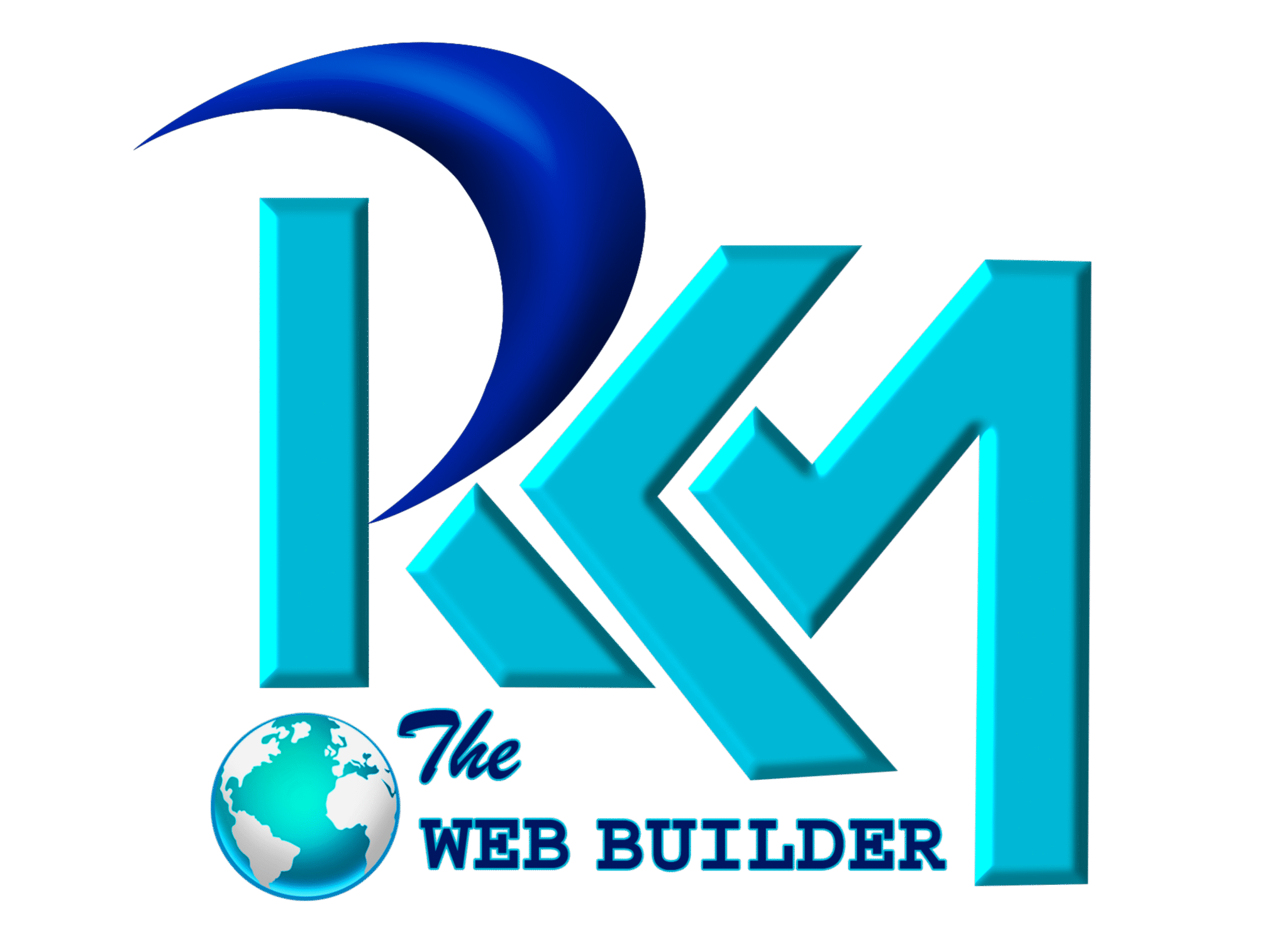The best AI productivity tools in 2025

ChatGPT is getting more impressive every year, but that’s just one app in a sea of possibilities. Right now, there’s a bit of everything for nearly every productivity problem: from new intelligent features on apps you already love, to entirely new platforms with jaw-dropping functionality.
Create an AI digital assistant with Zapier
I’ve been playing around with AI tools for a while now, and I’ve continued to update this list with lots of research and testing from me and the team at Zapier. With that, here are more than 60 AI productivity tools that will change the way you work.
The best AI productivity tools by category
- Chatbots (ChatGPT, Claude, Meta AI, Zapier Agents)
- Search engines (Perplexity, Google AI Overviews, Arc Search)
- Content creation (Jasper, Anyword, Writer)
- Grammar checkers and rewording tools (Grammarly, Wordtune, ProWritingAid)
- Video creation and editing (Runway, Descript, Wondershare Filmora)
- Image generation (Midjourney, Ideogram)
- Social media management (FeedHive, Vista Social, Buffer)
- Voice and music generation (ElevenLabs, Suno, AIVA)
- Knowledge management and AI grounding (Mem, Notion AI Q&A, Personal AI)
- Task and project management (Asana, Any.do, BeeDone)
- Transcription and meeting assistants (Fireflies, Avoma, tl;dv)
- Scheduling (Reclaim, Clockwise, Motion)
- Email (Shortwave, Microsoft Copilot Pro for Outlook, Gemini for Gmail)
- Slide decks and presentations (Tome, Beautiful.ai, Slidesgo)
- Resume builders (Teal, Enhancv, Kickresume)
- Automation (Zapier)
- Other AI productivity tools
Zapier Chatbots lets you create custom AI chatbots and take action with built-in automation—no coding required. Try the to-do list bot template, so you can start breaking down goals into actionable tasks.
How I selected the best AI productivity app in each category
My AI app database is at 270 entries right now. I’m absolutely sure there are way more out there, with many new apps being launched every week.

Full transparency: I’ve had a chance to take a look at most of them, but I haven’t tested them all (yet). The list you’re about to see contains a collection of great AI productivity tools tested by Zapier’s app review team, myself included. If there’s a particular category you like, check out the best apps lists we’ve put together for them—or if we’re still in the process of writing that list, run a quick Google search to find more options.
While all these apps are getting better every day, they’re far from perfect: be sure to always check AI’s work with your human brain. With that being said, please keep all hands and legs inside the vehicle—it’s time to explore.
1. AI chatbots
The best place to start is the category that brought AI to the mainstream. AI chatbots allow you to chat with an AI large language model, letting you ask questions and get answers in a conversational style. The best chatbots use advanced reasoning and logic, write code, and make mathematical calculations.
Take a look at the full list of chatbots in our article on the best AI chatbots.
ChatGPT

ChatGPT is the current industry leader, and the first chatbot that set the scene on fire. Now powered by GPT-4o, 4o-mini and the o1 reasoning model, it’s surprisingly flexible and very easy to use. Learn how to use ChatGPT, understand how it works, and discover how to use it to write marketing copy, do market research, or write sales emails.
You can also use Zapier’s ChatGPT integration to connect it with thousands of other apps, allowing you to orchestrate workflows that bring AI into every stage of your operations. For example, after an event ends, you can automatically collect attendee feedback from survey tools, have ChatGPT summarize the responses into key themes, and generate personalized follow-up emails based on participant engagement. Learn more about how to automate ChatGPT.
Claude

Anthropic’s safe and creative chatbot, Claude builds Artifacts: it can code simple interactive interfaces, write documents in a separate tab, or even design games for you. Make changes with prompts on the left side of the screen and see them come into shape on the right.
Zapier also integrates with Claude, enabling you to orchestrate sophisticated workflows that combine its reasoning capabilities across your tech stack. For example, you can use AI to analyze contracts or research reports, enrich the output with contextual data, and then distribute those findings across Slack, email, or your internal knowledge base—all without manual intervention. Discover more ways to automate Claude.
Meta AI

Meta AI, available only in the U.S. for now, is the first step toward a bigger integration of AI features across Facebook, Instagram, and WhatsApp. In addition to answering your questions, you can generate images and short animations with a prompt.
Later, you may be able to use Meta AI as you browse Meta’s social media platforms, generating content and crushing the massive amount of feed data into more digestible insights about your friends and followers.
Zapier Agents

Zapier Agents is an experimental AI workspace where you can teach AI agents to work across thousands of apps. But the interface is a chatbot, which means that creating your own AI agent is as simple as using ChatGPT.
Start by giving your agent access to your company’s source of truth in apps like HubSpot, Notion, and Airtable. You can ask it about your data as well as all the data in your apps—and data sources will sync automatically.
And you can train your agents to work even while you’re not there: tell your agent what to do when it’s triggered, how to process or summarize data, and which actions it should take, all without writing a line of code. These agents are like mini-teammates who help you with specific tasks, like analyzing your spreadsheets, searching the web, or drafting responses to customers.
It’s AI chat, automation, and data analysis all in one place. Learn more about Zapier Agents, and then get started for free.
2. AI search engines
Hallucinations are one of the biggest issues with AI. To counter this risk, some tools include web searches into their apps, using the results as sources to support the AI-generated answer. And that’s an AI search engine in a nutshell.
Get the full tour in our article on the best AI search engines.
Perplexity

Leading the pack, Perplexity is attracting a lot of attention due to its high-quality answers, great quoting of sources, and staying on topic even as you ask follow-up questions. It uses a combination of Google’s, Bing’s, and proprietary ranking signals to decide which results are best to base the AI response on. It’s really good to use alongside a classic Google search if you’re digging into tricky topics—I’m still amazed by the niche things I found while researching with Perplexity. Curious? Read Zapier’s Perplexity full guide here.
Because Perplexity integrates with Zapier, you can connect it with thousands of other apps, embedding an AI orchestration layer into every step of your daily workflows. For example, you can automatically capture new industry news from Perplexity, have AI generate an executive summary with key takeaways and suggested actions, and share it with your leadership team in Slack. Learn more about how to automate Perplexity.
Google AI Overviews

You might’ve already noticed this when using Google Search lately: in addition to the list of search results, you’re now getting an AI-generated overview of the top ones. Google’s selection of sources to include is hit or miss at the moment, so please check everything before using any information. Still, the generated answer offers a good overview before starting a deep-dive.
Arc Search

Part of the Arc Browser project, Arc Search brings AI features into your search experience: enter your question and tap Browse for me to begin. Arc will grab the top results, break it down in sections, and start summarizing the source content into a structured answer. Toggle between the AI-generated results and the classic Google search page using the control at the bottom right of the screen. iOS and iPadOS only for now.
3. AI apps for content creation
Entire movies have been made about writer’s block. These apps are here to break it. By entering your prompts, starting from templates, or using recipes, you can use AI models as a co-writer, helping you put together first drafts faster.
Browse all the possibilities in our list of the best AI writing generators.
Jasper

Jasper is a powerful AI content creation platform, favoring users who need a high volume of content. It packs dozens of templates to help you get started, connects to the internet to find research and sources, and also lets you generate images with AI. All your content creation needs are covered here.
You can also connect Jasper to thousands of other apps using Zapier. This way, you can layer AI within multi-step workflows across tools and teams. For example, you can automatically create tailored ad copy based on campaign briefs, send drafts for approval in Slack or your project management apps, and upload final assets into your CMS or DAM system. Here are more ways to automate Jasper.
Read more: Jasper vs. ChatGPT
Anyword

Anyword helps marketers create content by breaking the generation process down step by step. First, you add your prompt to generate a few titles. Then, you can pick your favorite and see a generated outline. Once you tweak that outline to what you want to cover, you can move forward to generating the final piece.
Writer

Big businesses can’t afford missteps. A misplaced fact or an inaccurate claim can hurt brands, tank reputations, and take things to court. Where other LLMs tread gray areas, Writer offers their proprietary LLMs and plenty of tools to make sure your content stays true. On top of it, Writer will help keep brand voice consistent for teams who collaborate on publishing. That’s the productivity boost of AI with fewer risks.
By connecting Writer with Zapier, you can embed brand-safe AI writing into your company’s workflows at scale. For example, when your marketing team drafts a campaign brief, you can have AI generate channel-specific copy, applying your company’s brand guidelines and style rules automatically. It can also route the content to legal for approval, translate it for regional markets, and then push the final assets into your publishing and project management tools. Here are more ways to automate Writer.
4. AI apps for text enhancement
Spell-checking has been around for a long time, but AI is changing the game. Before, it only detected spelling and basic structure errors. Now, it can spot tone and complex language and offer suggestions to make your writing clearer.
Discover all the available apps in our list of the best grammar checkers.
Grammarly

Grammarly is the mainstream spell- and structure-checking app. It’s a complete solution that keeps your English on point, lets you adjust your tone, and suggests shortcuts to simplify wordy or complex phrases. It has plenty of extensions and integrations, so you can use it almost anywhere there’s a text box. It has basic generative text features, too.
Wordtune

Wordtune helps you find plenty of wording alternatives to improve your text. When you input the text you want to check, you can easily browse synonyms, ask to rewrite entire sentences, and adapt the suggestions into a final draft.
ProWritingAid

ProWritingAid is a direct competitor of Grammarly, offering plenty of statistics to help you track grammar, style, and spelling scores. One of the main advantages here is its lifetime plan, helping you leverage all these features without adding a new recurring bill. Find out which is the best for you in our ProWritingAid vs. Grammarly comparison.
5. AI apps for video generation and editing
While full-blown video generation is still coming together, there’s already a set of video tools that leverage AI to enhance video, remove backgrounds accurately, and even paint a few new images into each frame.
For the full list, see our picks for the best AI video generators.
Runway
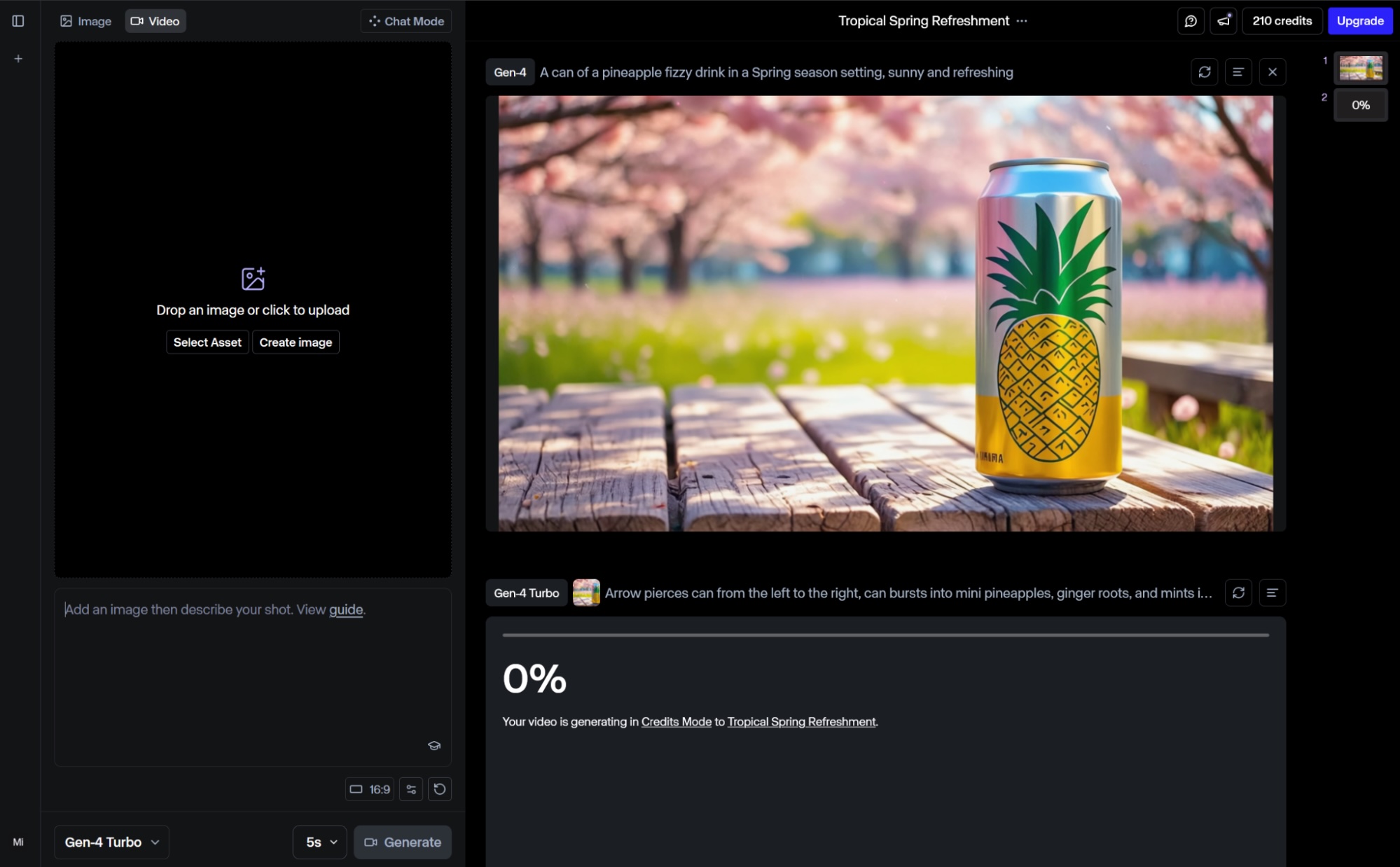
Runway is a video magic wand. The new Gen-3 Alpha model is a big step up in AI video generation, making it one of the best commercially available solutions. It has a set of interesting features that helps you generate video with AI, train your own models, and paint parts of frames using text prompts. The learning curve is very rewarding, and the app is growing at a great pace.
If that’s not enough, Runway also connects with Zapier. This means you can connect it with thousands of other apps and orchestrate AI-powered workflows across your organization. For example, when someone shares a video idea in Slack, you can use ChatGPT to automatically refine it into a polished prompt and send it to Runway to create. Once Runway’s created the video, it can notify your team in Slack for review.
Descript

Descript transcribes your videos into a script. Then, instead of using a timeline to trim the audio and video tracks, you edit the text script. As you do so, the video gets trimmed automatically. The rest of the editing works in a similar way, cutting the time to edit your talking head videos. Find out how it simplifies your audiovisual workflows in our walkthrough.
Wondershare Filmora
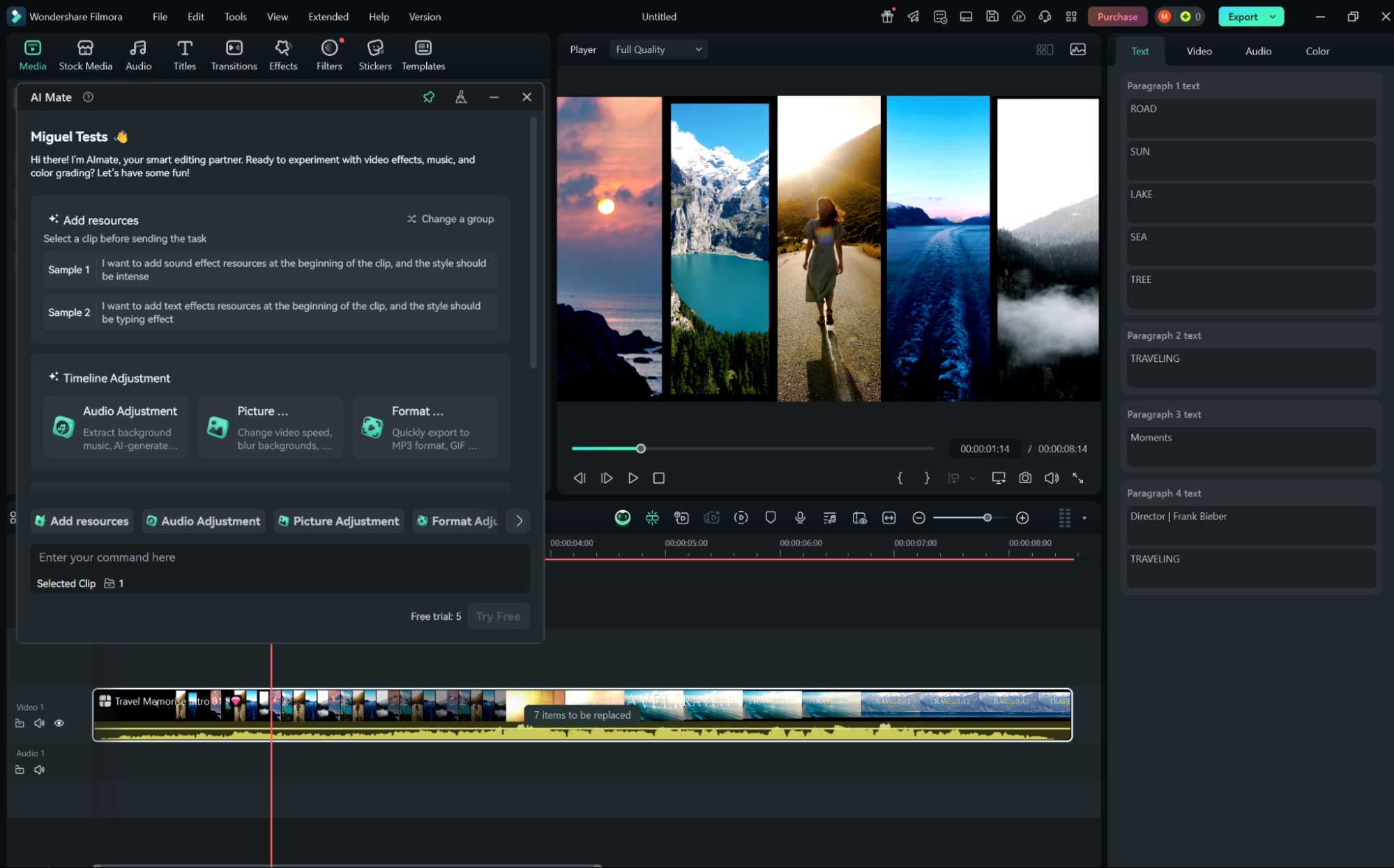
Wondershare Filmora has been around for a long time. Now, it also brings to the table a set of AI features that let you remove backgrounds, denoise low-quality clips, and improve sound quality. All this with the classic video editing user experience, so you’ll never feel lost.
6. AI apps for image generation
An image is worth a thousand words, but you don’t need so many to generate a beautiful one with AI. These image generators take a text prompt and deliver the results—and this can be anywhere between mind-blowing to nightmare-inducing. They’re both hugely entertaining and highly useful.
Read more about our picks for the best AI image generators.
Midjourney
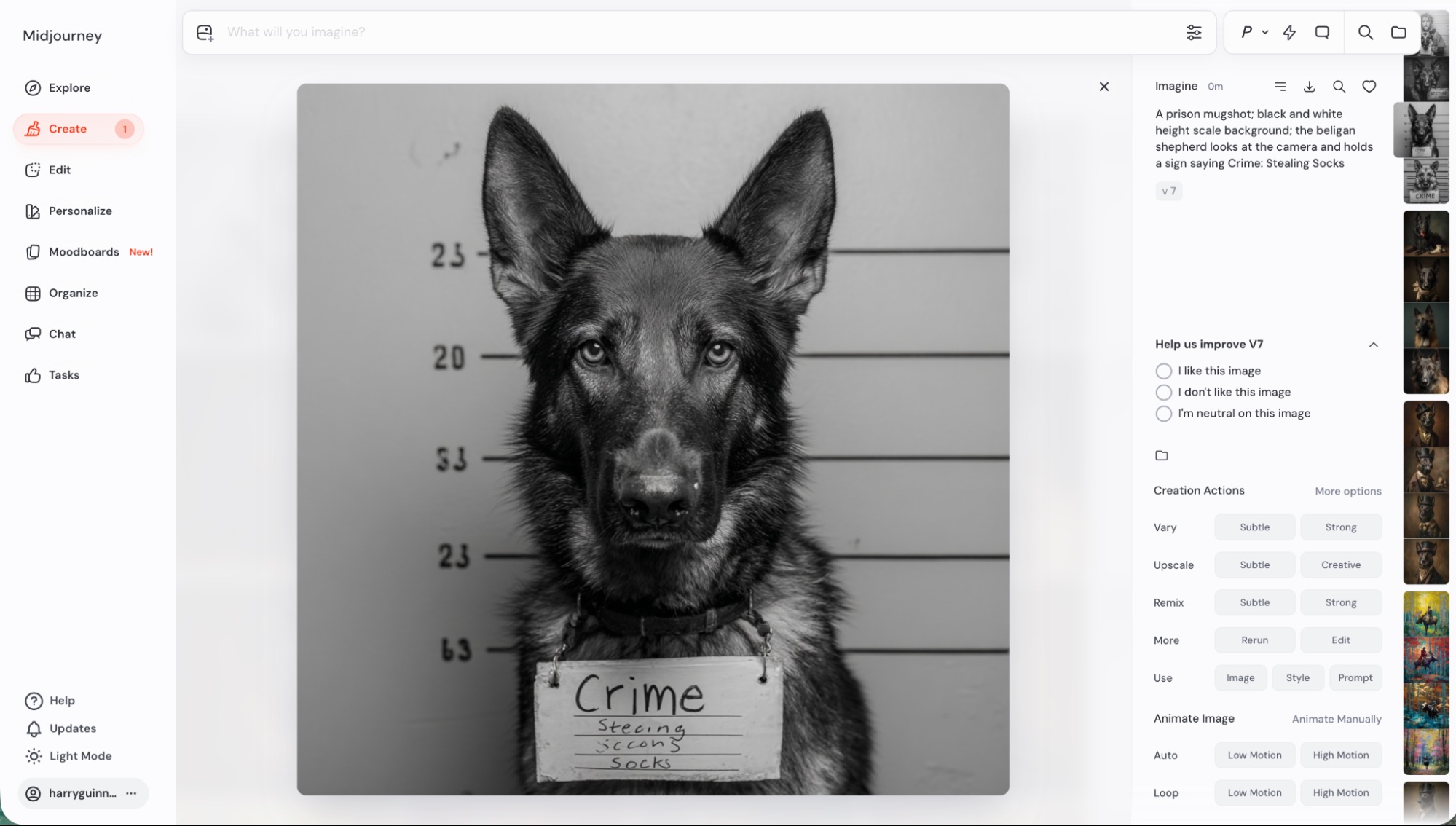
Midjourney is impressive. Anything you throw at it generates incredible results—even if sometimes they’re slightly off the mark. And while using it within Discord started making sense for me, it’s now possible to generate images on your browser as well.
Hit the ground running with our guide for how to use Midjourney.
Ideogram
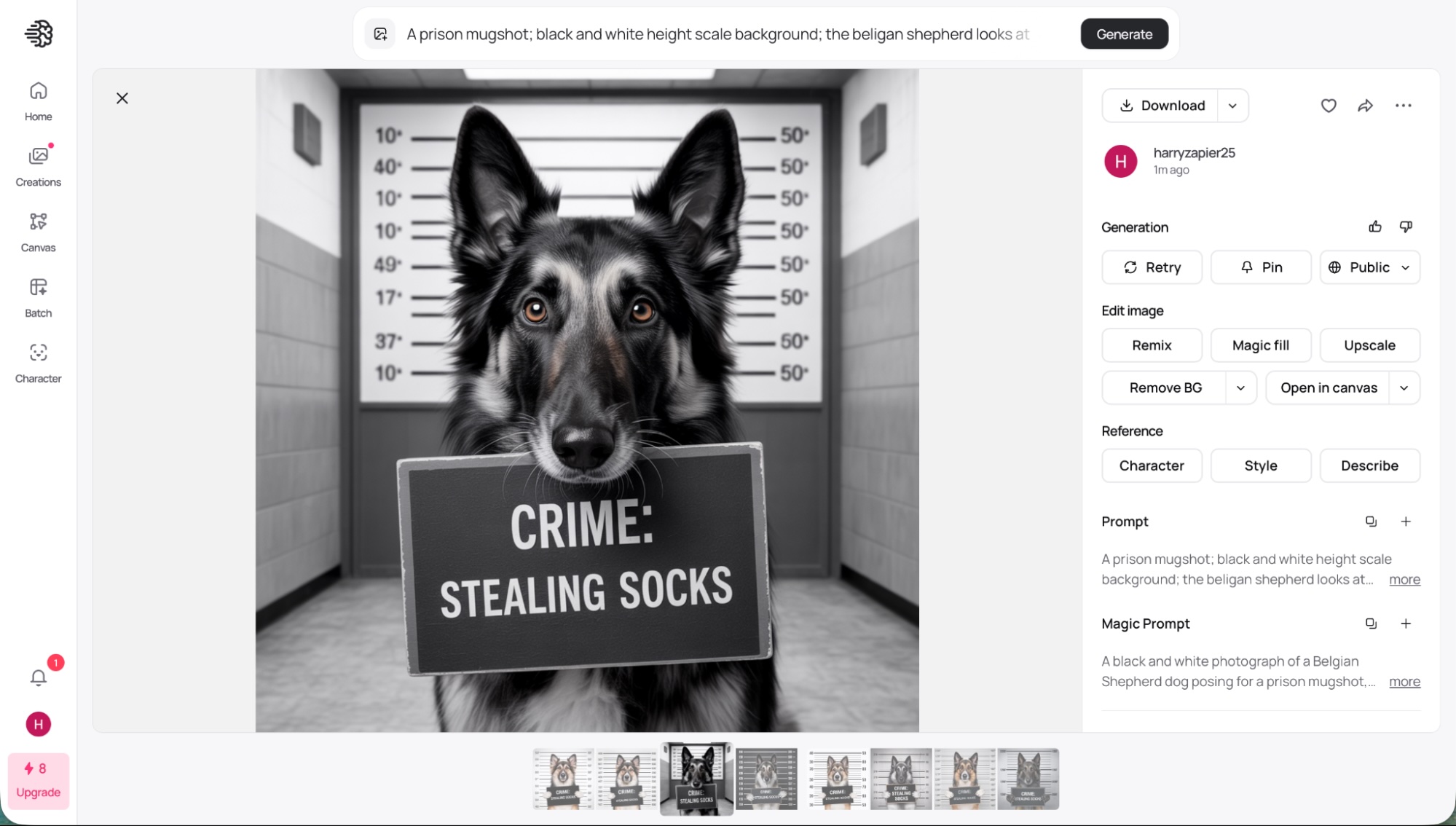
Image models are famous for their trouble when drawing letters. But Ideogram got the hang of it: it can generate accurate text whenever you ask for it in a prompt. Apart from that, it generates good-looking images, only slightly behind Midjourney in quality. And if you want additional aesthetic control, try out the image editor. Start playing with the 10 daily free credits—but keep in mind that everything you generate in this free plan is public.
7. AI apps for social media management
Keeping your social media channels active is like trying to juggle a dozen balls: new balls come in, old ones drop out, and you have to keep them all in the air at the same time. That’s images, videos, text, engaging with your audience, wrapping everything up into reports—and going again consistently.
AI can help: take a look at our list of the best AI social media management tools.
FeedHive

Content repurposing is a smart strategy for two reasons. First, it helps your newer audience connect with the lightbulb moments you dropped before they were following you. Second, it eases the pressure of having to create new content from scratch every week. FeedHive includes AI-powered content recycling features, among a vast collection of other tools to make sure you switch the admin hat for creative one.
Vista Social

When you’re managing four or more channels at once, it’s easy to lose track of what’s happening. Vista Social acts as a hub for everything social media, gathering it all in a single place. The AI tools help repurpose content from platform to platform, so you can start writing for LinkedIn but have it ready for Facebook and Instagram, for example.
By connecting Vista Social to Zapier, you can orchestrate more advanced AI-powered workflows across your tech stack. For example, AI can generate post variations based on performance data, schedule them in Vista Social, and log engagement metrics in your business intelligence tool.
Buffer

Buffer‘s AI features focus on sharpening your message to match the engagement style of each social media platform. As you create a new post, the side tab updates with copy matching the channel’s requirements, offering ways to further customize the tone and length. It also offers a place where you can note down all your post ideas, so you can quickly expand them with AI and schedule them for publishing.
When you connect Buffer to Zapier, you can connect it with thousands of other apps and embed it into a broader AI-orchestrated system that spans your entire tech stack. For example, you can generate campaign assets with AI, schedule them across multiple channels, and feed performance data into your analytics tool. Learn more about how to automate Buffer.
8. Voice and music generators
YouTubers and other social media creators sometimes struggle to get original assets for their content. Good thing AI is here to (re)mix everything with AI voice generators and AI music generators.
ElevenLabs

ElevenLabs is the flashiest AI voice generator platform on the market. With high-quality output, a sound effect generator, and over 300 voices—including some of real-world personalities such as Christy Carlson Romano, Disney’s Kim Possible—it’s easy to see how it got a $1B valuation. Whenever you need clear, engaging voices and don’t have the time or budget for working with voice actors, be sure to try it out. Listen to a sample here.
You can also connect ElevenLabs to Zapier to automate workflows that weave AI voice generation into broader production processes. For example, you can take a finalized script from Google Docs, send it to ElevenLabs to generate narration, and upload the audio file to Dropbox.
Suno

Want to compose a quick hit but don’t have time to hang out at the recording studio? Skip everything: enter a prompt, and Suno will create a song, complete with lyrics, varied musical composition, and an actual voice track. I generated a song about a flying banana that would’ve perfectly blended in a night out in a Spanish island club. Even if you won’t use it in the long run, give it a quick try: it’s super fun.
AIVA

AIVA also deals with music, but takes a different approach. Instead of a text prompt, there are three ways you can start generating:
- By picking a style, from epic orchestral to cinematic cyberpunk
- By chord progression
- By uploading an audio reference as inspiration
Once ready, you can edit the result in a timeline editor, adding or removing instrument tracks as you feel your way into the final version.
9. AI apps for knowledge management and grounding
AI is also a powerful assistant search tools. When you connect it to your personal data, workspace, or second brain, it can find anything you need and put it into a natural language answer. Much better than sifting through your notes for hours, right? This is the gist of grounding: keeping an AI model close to your facts—not up there flying with the hallucinations.
Mem


